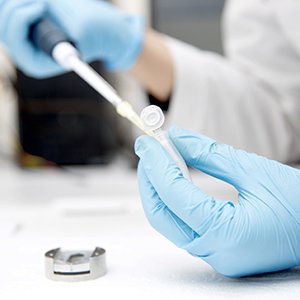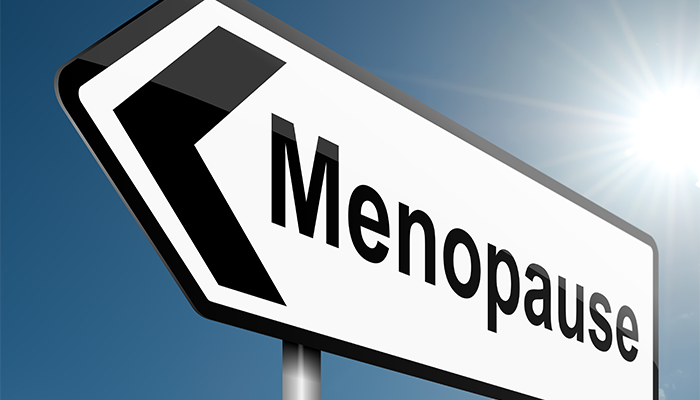There is a lot of medical research on a different and superior method of delivering testosterone to women.
Hormone replacement therapy by pellet implantation has been used with great success in the United States, Europe and Australia since 1938 and found to be superior to other methods of hormone delivery (Greenblatt 49, Mishnell 41, Cantrill 84, Stanczyk 88).
Testosterone pellet for treatment of hormone imbalance in women is not experimental.
Pellets deliver consistent, physiologic levels of hormones and avoid the fluctuations of hormone levels seen with other methods of delivery (Greenblatt 49, Thom 81, Cantrill 84 Stanczyk 88).
Estrogen delivered by subcutaneous implants maintains the normal ratio of estradiol to estrone (Thom 81, Stanczyk 88, Owen 92, Cravioto 01).
Hormones delivered by the subcutaneous implants bypass the liver, do not affect clotting factors and do not increase the risk of thrombosis (Notelovitz 87, Seed 00).
Testosterone delivered subcutaneously by pellet implant is cardiac protective, unlike oral, synthetic methyl-testosterone (Sands 97, Worboys 00).
Testosterone delivered by pellet implantation, does not adversely affect blood pressure, lipid levels, glucose or liver functions (Burger 84, Farish 84, Fletcher 86, Barlow 86, Notelovitz 84, Stanczyk 88, Davis 95, 00, Sands 97, Seed 00, Cravioto 01).
Pellets are superior to oral and topical hormone therapy with respect to relief of menopausal symptoms (Staland 78, Cardoza 84). Testosterone implants have consistently been shown to improve insomnia, sex drive, libido, hot flashes, palpitations, headaches, irritability, depression, aches, pains, and vaginal dryness (Staland 78, Thom 81, Brincat 84, Davis 95, 00, Cravioto 01).
Hormone replacement therapy with testosterone implants is superior to oral and topical (both the patch and gel) hormone replacement therapy for bone density (Savvas 88, 92, Davis 95, Anderson 97).
The consistent, adequate levels of testosterone delivered by pellet implant are important in maintaining bone mineral density (Aminoroaya 05) while also being available as a substrate for the production of estradiol (Simpson 02, 03). The pellets not only prevent bone loss but also actually increase bone density (Savvas 88, Studd 90, Garnett 91, Savvas 92, Naessen 93, Holland 94, Studd 94, Davis 95, Anderson 97, Seed 00, Panay 00).
Testosterone implants in women have been shown to improve lethargy, depression, loss of libido, and hot flashes as well as cardiac and lipid profiles (Farish 84, letcher 86, Sands 97, Seed 00).
Testosterone delivered by subcutaneous implants does not increase the risk of breast cancer (Dimitrakakis 04, Natrajan 02) as does oral, synthetic methyl-testosterone (Tamimi 06).
Testosterone, delivered by pellet implant does not affect the menstrual cycle (Dewis 86) and has been used to treat endometriosis and uterine fibroids (Greenblatt 49).
Testosterone pellet implants have also been used to successfully treat severe pre-menstrual syndrome unresponsive to other forms of therapy, without adverse effects (Dewis84).
Pellets do not have the same risk of breast cancer as the synthetic progestins or synthetic Methyl-testosterone. In fact, studies show a reduction in the incidence of breast cancer with the implantation of testosterone pellets, with or without estradiol pellets (Dimitrakakis 04, Tutera 09). Even after over 20 years of therapy with hormone implants, the risk of breast cancer is not increased (Gambrel 06).
In breast cancer survivors, hormone replacement therapy with pellet implantation does not increase the risk of cancer recurrence or death (Natrajan 02) compared to estrogen in combination with the synthetic progestins (Habits Trial 04).
Hormone replacement therapy with pellet implantation has an extremely low incidence of side effects (Cardoza 84, Barlow 86, Ganger 89, Pirwany 02) and high compliance rate (Gambrell 06). It has been shown to be extremely effective in the treatment of migraine headaches (Magos 83).
The testosterone implant is licensed in England for women. The 75 mg testosterone implant is FDA approved in the US (July 13, 1972, male patients). Other doses need to be compounded by trained pharmacists.
The routine doses of testosterone delivered by pellet implantation in recent studies are between 75 and 225mg in women. The pharmacokinetics and pharmacodynamics are well established showing that these doses deliver reproducible levels of testosterone for 3 to 5 months. The studies show that pellets have a zero order release rate. Testosterone implants have a near linear release rate. Peak serum testosterone levels with the implants are usually seen at month one. Therapeutic testosterone levels at month one, are expected to be between 250 and 375 ng/dl in females.
At approximately 3 months in women, testosterone levels drop at which time symptoms return and the pellets are reinserted. Each individual has their own reproducible levels where symptoms return.
Testosterone implants have been used in women. Doses used in studies are as low as 50 mg and up to 225 mg. In the United States, common doses are 75, 100, 110mg, 125 and 150 mg.
There are minimal side effects at these doses (slight increase in facial hair 20% and mild acne 5%). This may be reduced by lowering the dose, if the patient chooses. If measured, serum treatment levels are elevated above non-treatment levels at month one (Burger 84, Dewis 84, Gambrel 06l, Thom 81, Glaser 09) urine and saliva levels remain normal. There are no signs of androgen excess at these treatment levels.
Symptoms return when testosterone levels reach the upper end of endogenous ranges (Burger 84, Glaser unpublished). End organ response to testosterone remains optimal (i.e., relief of depression, increase in bone density, relief from insomnia, relief from aches and pains, lessened anxiety, improved memory and concentration, increased energy, etc.).
Testosterone implants last between 2.5 and 3.5 months in female patients. Individual treatment doses and treatment ranges are established and are reproducible.
In a paper published in the journal ‘Menopause’ in 2004, ‘Breast cancer incidence in postmenopausal women using testosterone in addition to usual hormone therapy’ women were referred for testosterone supplementation for the following indications:
- Complaints of emotional liability
- Fatigue and loss of stamina
- Impaired concentration and memory
- Breast tenderness
- Loss of libido
- Sleep disturbance
- Muscle weakness
Female patients received testosterone implant containing 50-150 mg of testosterone every 5 months in addition to estrogen or progesterone therapy.
The addition of testosterone, delivered by pellet implant, was shown to reduce the incidence of breast cancer in women treated with conventional hormone therapy. In women, not on synthetic progestin therapy (which is known to increase the incidence of breast cancer RR 1.69-2.00), the incidence of breast cancer was lower than no hormone therapy.
Testosterone therapy alone, delivered by pellet implant is effective for the relief of both physical and psychological symptoms in pre-menopausal and post-menopausal patients.
Symptoms of testosterone deficiency/hormone imbalance are often seen prior to menopause.
Testosterone alone has previously been reported to be more effective than estrogen/testosterone or estrogen therapy alone for relief of somatic and psychological symptoms (Sherwin 85).
Uninterrupted sufficiency of circulating testosterone supports the production of estradiol by aromatase in estrogen dependent tissues (brain, bone, cardiac, vascular tissue, fat and breast tissue) and affords protection against estrogen deficiency.
Also, low circulating levels of estrogen have no bearing on estrogen produced locally. This may explain why continuous delivery of testosterone by pellet implant is so effective in post-menopausal patients and estrogen only supplementation is inadequate therapy.
So, in summary, subcutaneous testosterone therapy is safe and extremely effective for both pre- and post-menopausal patients in relieving “menopausal symptoms” and reduces the risk of breast cancer.
We thought you should know the facts.







